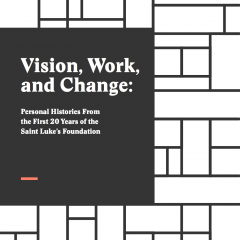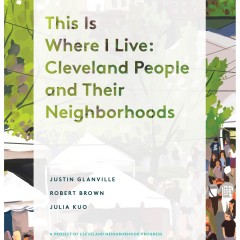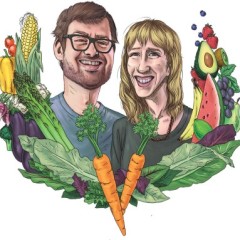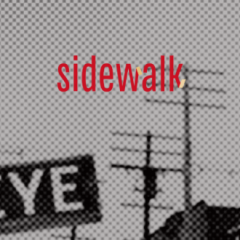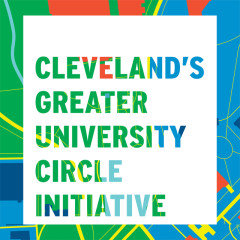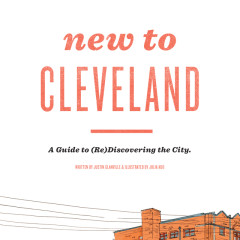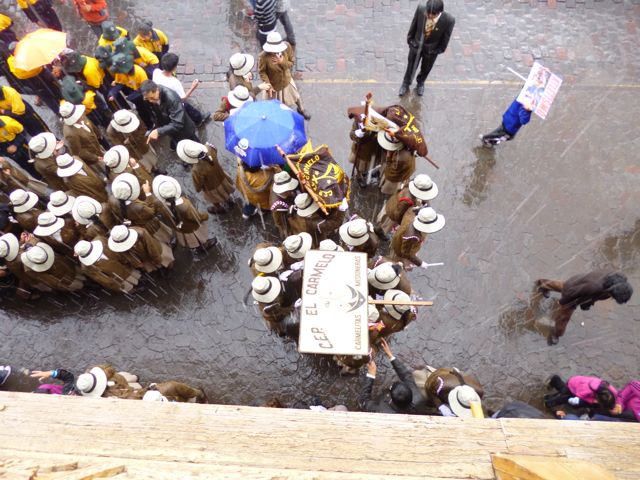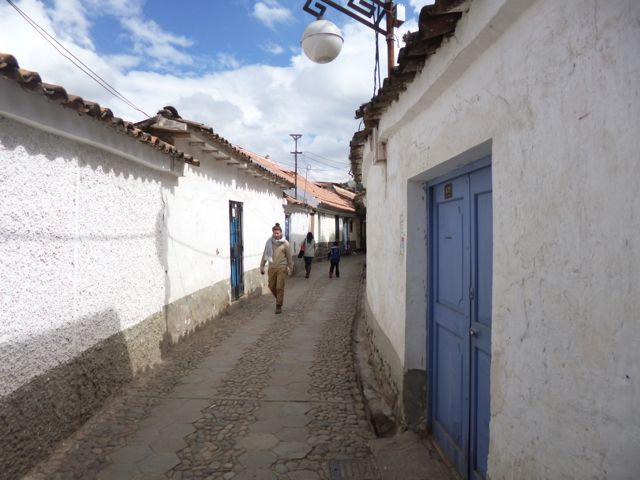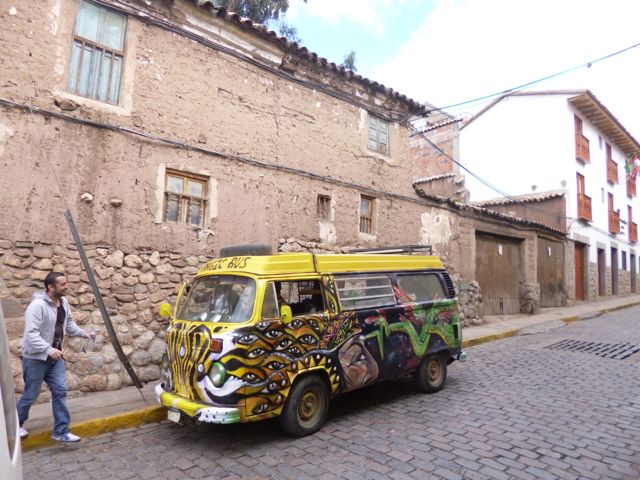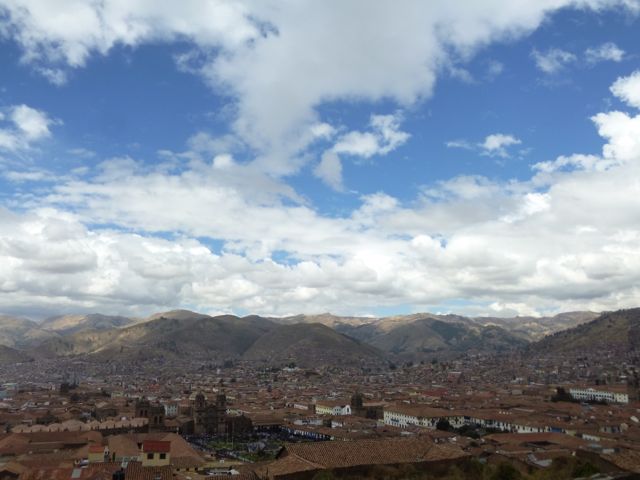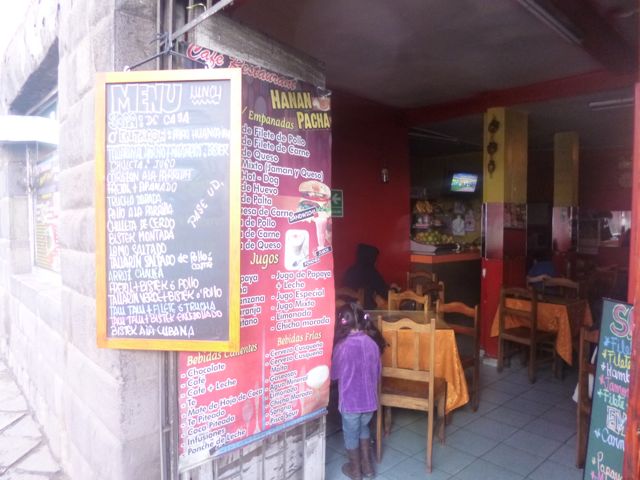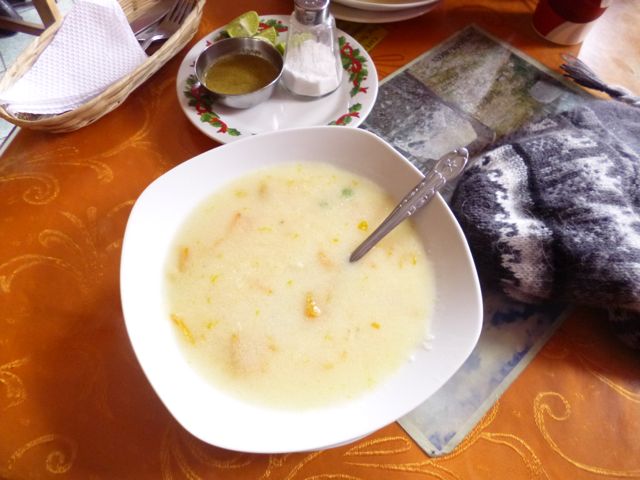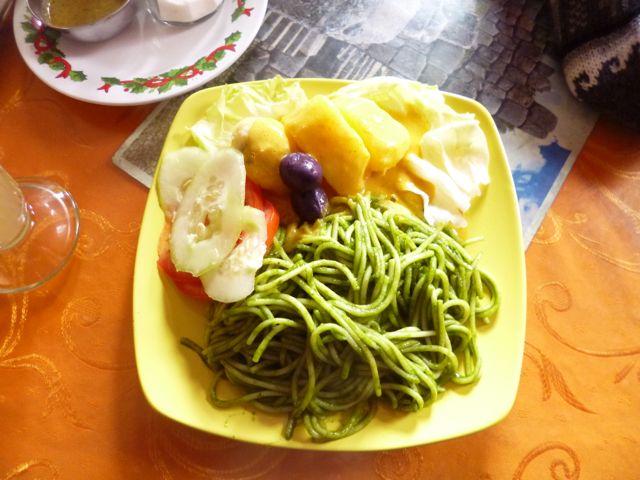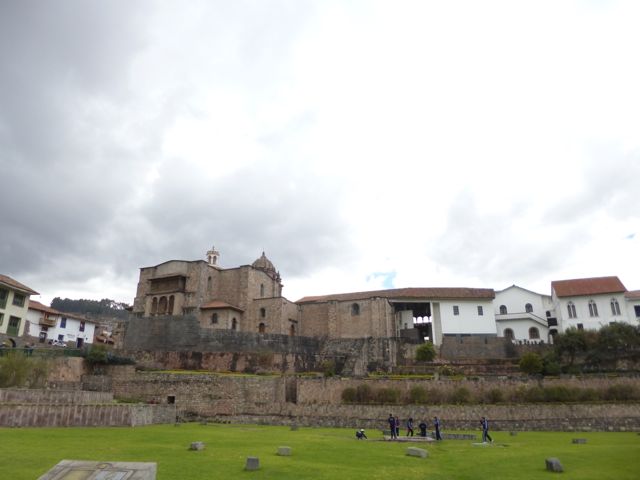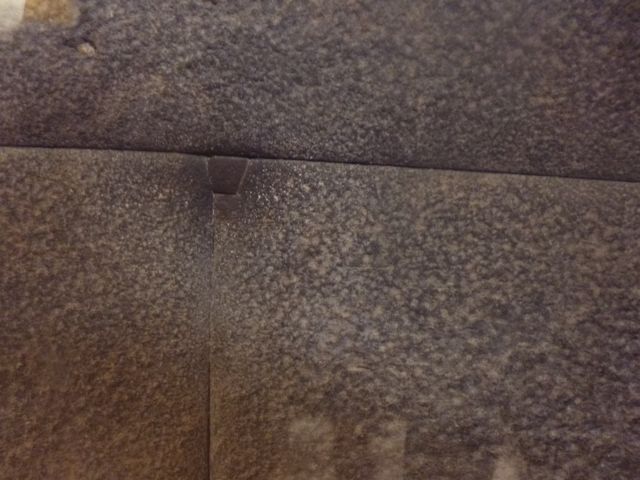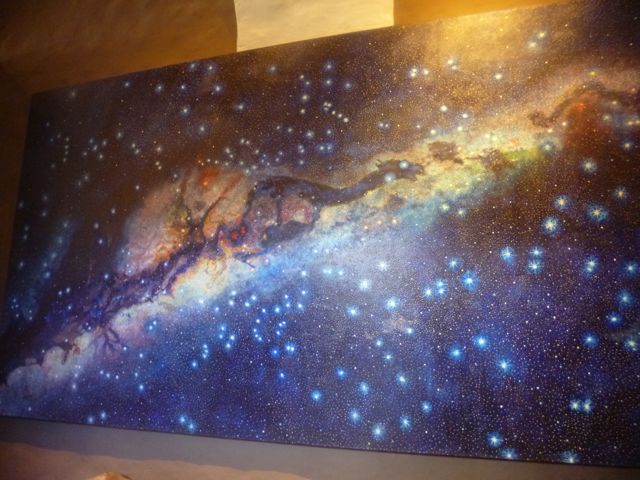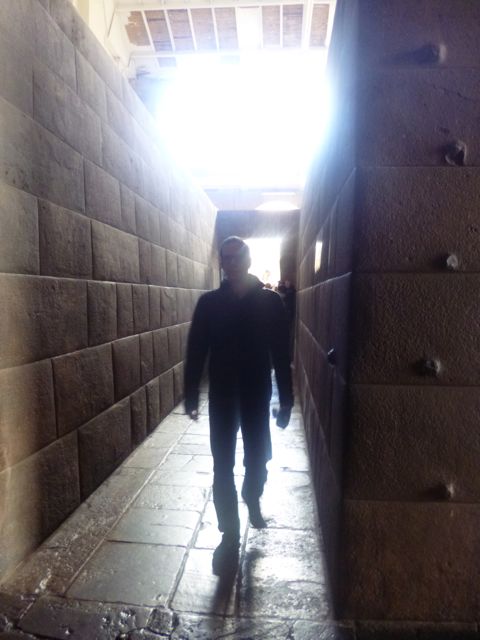Seth and I spent the day exploring Cusco. It was a Sunday, and a lot of stuff was closed, including almost all the museums. That, along with the dreary weather, meant I was probably destined not to like this city quite as much as Puno or Arequipa.
Still, it’s a remarkable place. The San Blas neighborhood, near where we’re staying, was like a quieter, more intimate version of the area around Cusco’s busy, touristy Plaza de Armas.
This has traditionally been the bohemian/artsy district of the city, and it lived up to that reputation. Street musicians, yoga studios and centers of healing abounded.
And there was a magic bus.
The streets were steep here, and as we climbed we neared the church of San Cristobal. The plaza in front of the church offered incredible views of the Plaza de Armas way below.
We saw a big parade going on in the square.
So we went down to check it out. A little preview of what the Inca Trail would be like!
We never did find out exactly what the event was for — perhaps something about a graduation — when it started sprinkling, and then hailing. We ducked into the Starbucks on the plaza, which looked and tasted like a Starbucks anywhere, something I’m afraid I took a bit of comfort in. Well, it did have this amazing, colonial-Spanish tile floor. You probably wouldn’t find that in the States.
The shop was on the second floor, and as the rain and hail came heavier, I walked onto the balcony to look at the people below. They were screaming and scattering for shelter.
Our plan for the afternoon was to go to Qorikancha, an Incan temple that had been turned into a Catholic Church by the Spaniards. It didn’t open until 2, so we had a leisurely lunch at a hole in the wall restaurant, called Hanan Pacha, serving local fare. Delicious and dirt cheap.
We both got a sopa (soup) made with semolina grains, squash, cilantro and peas.
I ordered the tallarin verde, which turned out to be pesto, with a side of local potatoes. There are some 300-500 types of native potatoes in Peru.
And Seth ordered the tacu tacu, which is a creamy/cheesy pile of rice topped with a big slab of meat — in this case, bisteck.
Qorikancha, after lunch, was mobbed, probably because it was one of the few tourist things open that day. Cusco was the Incan capital, and this temple was the very heart of Incan civilization. The Inca laid out their satellite sacred sites, or wakas, along lines radiating out from Qorikancha. Some wakas were natural — rocks, caves, springs. Others were man-made. I thought about how we’ve lost this sense of mystery now, and how this must be part of why supernatural fiction is so popular.
The tight masonry of the walls is impressive enough, but at one time they were also covered in sheets of pure gold.
A display talked about Incan astronomy. I loved reading about how the Inca actually saw shapes/constellations in the dark spaces of the Milky Way and between the stars, rather than in the stars themselves. Some of the shapes the Inca saw in these dark spaces — called yana phuyu — were serpents, a partridge following a toad and a llama taking care of her baby. Here’s a diagram.
It was fun to walk through the narrow hallways.
That evening at 7, we had our orientation at Lllama Path. Our guide, Casiano, delivered the sobering news that we’d be meeting for departure the next morning at 4:30 a.m. — which meant waking up at a cool 3:30 a.m.
The group of hikers — there are 16 of us altogether — seemed amiable and excited. At 38, I’m the third-oldest person on the hike, after a couple from Columbus who are in their 40s. The man from this couple also has a son who’s 15. Otherwise, everyone’s in their mid-20s to early 30s, and everyone’s accompanied by their S.O. except for me, Seth and a woman from Australia.
As we listened to Casiano talk about the mountain passes we’d be climbing over the next four days — including one, Dead Woman’s Pass, that would take us close to 14,000 feet — I found myself feeling excited and nervous at once. I didn’t wonder much about covering the kilometers (45 altogether), but I’m used to 600-feet-above-sea-level Cleveland. I got the sense that everyone felt the same way: Eager to get started and see how they’d do.


